#Women's Herstory Month
Explore tagged Tumblr posts
Text




Happy Disability Pride Month! 🩶💚❤️🤍💛💙🩶🌈 (x)
#disability pride month#disability pride#disability#disability rights#disabled community#disabled women#wlw#wlw history#sapphic#sapphic history#sapphics#lesbian#lesbian history#black history#lgbt#lgbt history#lgbtq#lgbtqia#lgbtqia+#history#herstory#photography#vintage photography#b&w#b&w photography#bw#bwphotography#debra st. john#1990s#source: pinterest
18K notes
·
View notes
Text
Women's Not So Distant History
This #WomensHistoryMonth, let's not forget how many of our rights were only won in recent decades, and weren’t acquired by asking nicely and waiting. We need to fight for our rights. Here's are a few examples:

📍 Before 1974's Fair Credit Opportunity Act made it illegal for financial institutions to discriminate against applicants' gender, banks could refuse women a credit card. Women won the right to open a bank account in the 1960s, but many banks still refused without a husband’s signature. This allowed men to continue to have control over women’s bank accounts. Unmarried women were often refused service by financial institutions entirely.

📍 Before 1977, sexual harassment was not considered a legal offense. That changed when a woman brought her boss to court after she refused his sexual advances and was fired. The court stated that her termination violated the 1974 Civil Rights Act, which made employment discrimination illegal.⚖️
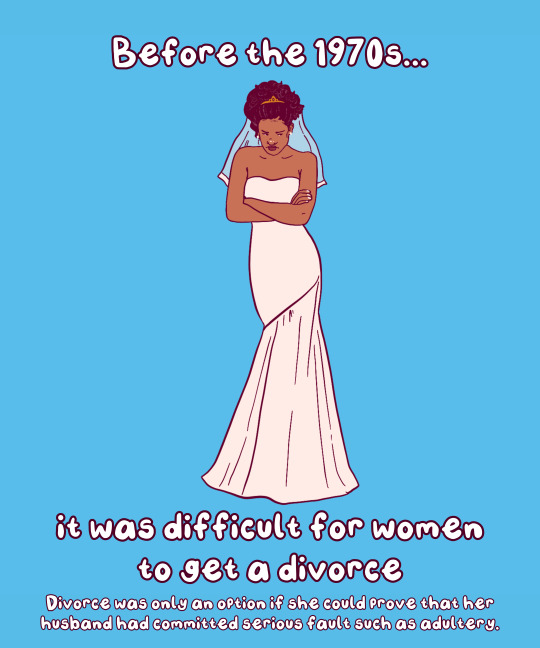
📍 In 1969, California became the first state to pass legislation to allow no-fault divorce. Before then, divorce could only be obtained if a woman could prove that her husband had committed serious faults such as adultery. 💍By 1977, nine states had adopted no-fault divorce laws, and by late 1983, every state had but two. The last, New York, adopted a law in 2010.
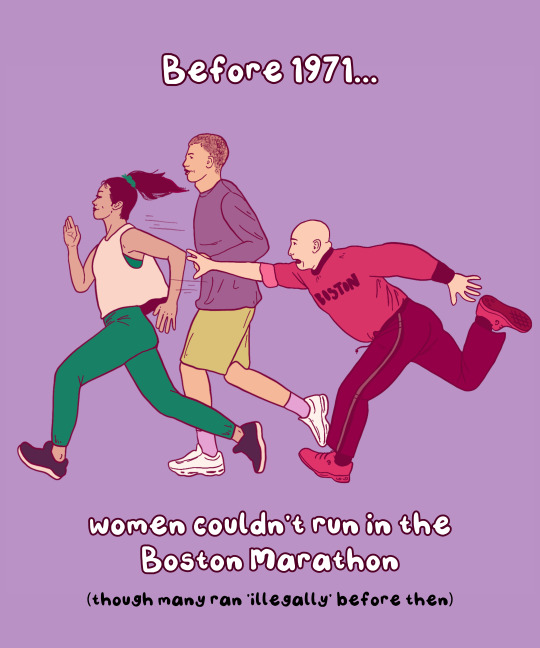
📍In 1967, Kathrine Switzer, entered the Boston Marathon under the name "K.V. Switzer." At the time, the Amateur Athletics Union didn't allow women. Once discovered, staff tried to remove Switzer from the race, but she finished. AAU did not formally accept women until fall 1971.

📍 In 1972, Lillian Garland, a receptionist at a California bank, went on unpaid leave to have a baby and when she returned, her position was filled. Her lawsuit led to 1978's Pregnancy Discrimination Act, which found that discriminating against pregnant people is unlawful

📍 It wasn’t until 2016 that gay marriage was legal in all 50 states. Previously, laws varied by state, and while many states allowed for civil unions for same-sex couples, it created a separate but equal standard. In 2008, California was the first state to achieve marriage equality, only to reverse that right following a ballot initiative later that year.

📍In 2018, Utah and Idaho were the last two states that lacked clear legislation protecting chest or breast feeding parents from obscenity laws. At the time, an Idaho congressman complained women would, "whip it out and do it anywhere,"

📍 In 1973, the Supreme Court affirmed the right to safe legal abortion in Roe v. Wade. At the time of the decision, nearly all states outlawed abortion with few exceptions. In 1965, illegal abortions made up one-sixth of all pregnancy- and childbirth-related deaths. Unfortunately after years of abortion restrictions and bans, the Supreme Court overturned Roe in 2022. Since then, 14 states have fully banned care, and another 7 severely restrict it – leaving most of the south and midwest without access.
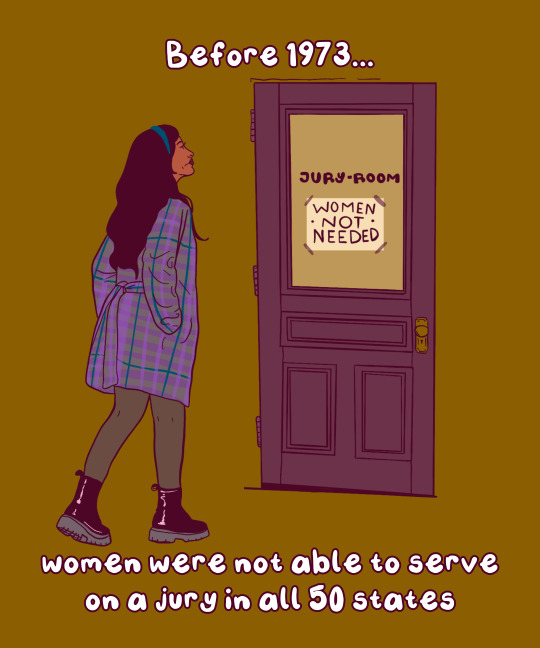
📍 Before 1973, women were not able to serve on a jury in all 50 states. However, this varied by state: Utah was the first state to allow women to serve jury duty in 1898. Though, by 1927, only 19 states allowed women to serve jury duty. The Civil Rights Act of 1957 gave women the right to serve on federal juries, though it wasn't until 1973 that all 50 states passed similar legislation

📍 Before 1988, women were unable to get a business loan on their own. The Women's Business Ownership Act of 1988 allowed women to get loans without a male co-signer and removed other barriers to women in business. The number of women-owned businesses increased by 31 times in the last four decades.
Free download
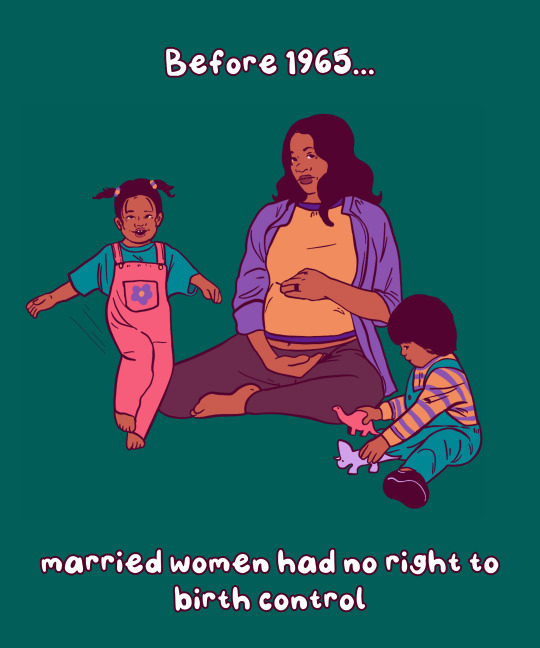
📍 Before 1965, married women had no right to birth control. In Griswold v. Connecticut (1965), the Supreme Court ruled that banning the use of contraceptives violated the right to marital privacy.

📍 Before 1967, interracial couples didn’t have the right to marry. In Loving v. Virginia, the Supreme Court found that anti-miscegenation laws were unconstitutional. In 2000, Alabama was the last State to remove its anti-miscegenation laws from the books.

📍 Before 1972, unmarried women didn’t have the right to birth control. While married couples gained the right in 1967, it wasn’t until Eisenstadt v. Baird seven years later, that the Supreme Court affirmed the right to contraception for unmarried people.
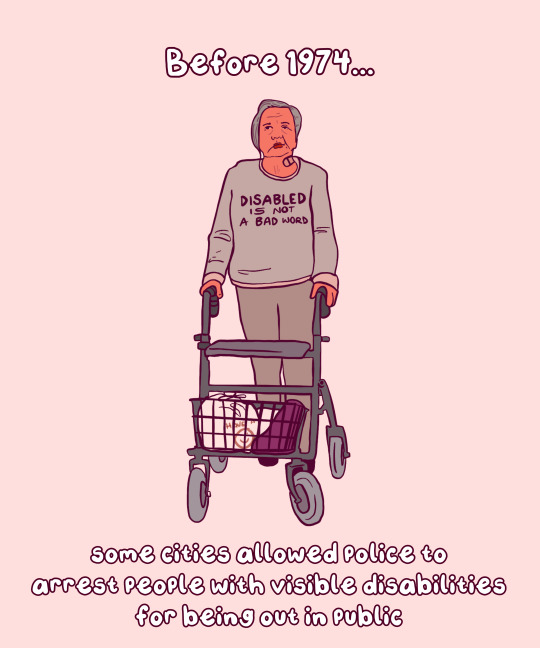
📍 In 1974, the last “Ugly Laws” were repealed in Chicago. “Ugly Laws” allowed the police to arrest and jail people with visible disabilities for being seen in public. People charged with ugly laws were either charged a fine or held in jail. ‘Ugly Laws’ were a part of the late 19th century Victorian Era poor laws.

📍 In 1976, Hawaii was the last state to lift requirements that a woman take her husband’s last name. If a woman didn’t take her husband’s last name, employers could refuse to issue her payroll and she could be barred from voting.

📍 It wasn’t until 1993 that marital assault became a crime in all 50 states. Historically, intercourse within marriage was regarded as a “right” of spouses. Before 1974, in all fifty U.S. states, men had legal immunity for assaults their wives. Oklahoma and North Carolina were the last to change the law in 1993.

📍 In 1990, the Americans with Disability Act (ADA) – most comprehensive disability rights legislation in U.S. history – was passed. The ADA protected disabled people from employment discrimination. Previously, an employer could refuse to hire someone just because of their disability.

📍 Before 1993, women weren’t allowed to wear pants on the Senate floor. That changed when Sen. Moseley Braun (D-IL), & Sen. Barbara Mikulski (D-MD) wore trousers - shocking the male-dominated Senate. Their fashion statement ultimately led to the dress code being clarified to allow women to wear pants.

📍 Emergency contraception (Plan B) wasn't approved by the FDA until 1998. While many can get emergency contraception at their local drugstore, back then it required a prescription. In 2013, the FDA removed age limits & allowed retailers to stock it directly on the shelf (although many don’t).

📍 In Lawrence v. Texas (2003), the Supreme Court ruled that anti-cohabitation laws were unconstitutional. Sometimes referred to as the ‘'Living in Sin' statute, anti-cohabitation laws criminalize living with a partner if the couple is unmarried. Today, Mississippi still has laws on its books against cohabitation.
#art#feminism#women's history#women's history month#iwd2024#international women's day#herstory#educational#graphics#history#70s#80s#rights#women's rights#human rights
17K notes
·
View notes
Text
Katherine Johnson: The Mathematician Who Launched Astronauts into Space and Women into STEM 🚀👩🚀
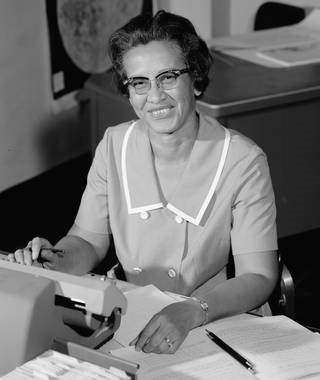
In the vast expanse of the cosmos, where men first dreamed of reaching the stars, Katherine Johnson calculated the path that would get them there. This story isn't just about trajectories and orbits; it's about a woman whose brilliance in mathematics helped break the barriers of space and gender.

Johnson's journey began in White Sulphur Springs, West Virginia, where her curiosity and intelligence shone from an early age. Despite encountering segregation and sexism, she charted a course that would lead her to NASA, where her skills became indispensable to the success of the U.S. space program. Her calculations were critical to the success of the Mercury missions, including John Glenn's pioneering orbital flight, for which he specifically requested Johnson verify the computer's numbers. "If she says they're good," Glenn said, "then I'm ready to go."

But Johnson's contributions went beyond Mercury. She also played a role in the Apollo missions, including the first lunar landing, and her work on orbital mechanics laid the groundwork for the Space Shuttle program and plans for a Mars mission.

Her legacy is a beacon for women and people of color in STEM, symbolizing the power of intelligence and perseverance to overcome societal constraints. Johnson's story teaches us that the path to the stars is paved with determination, hard work, and an unwavering belief in one's own abilities.

Katherine Johnson's calculations helped lead humanity to the moon, but her impact extends far beyond the numbers. She charted a course for future generations of women in STEM, proving that the sky is not the limit—it's just the beginning. As we look up at the stars, we remember her legacy, not just as a mathematician, but as a trailblazer who launched us into a new era of exploration and equality.
#PiDay#KatherineJohnson#Katherine Johnson#NASA#Mathematics#National Archives#Women's History Month#HERstory#Archives#Apollo13#Mercury#STEM#Women in STEM#Science
611 notes
·
View notes
Text
Sooo you're used to it by now, here's my 4th special pride post, and today we're going to talk about
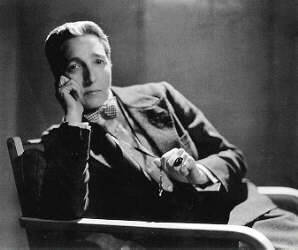
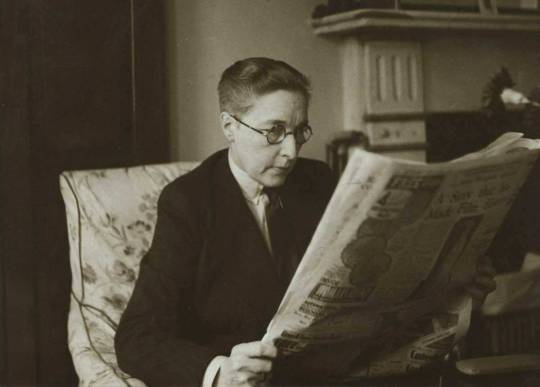
Marguerite Radclyffe-Hall !
Marguerite was born in 1880 and died in 1943. She was a British poet and writer, author of "The Well of Loneliness", a revolutionary and very important novel in lesbian literature. She never tried to hide her homosexuality.
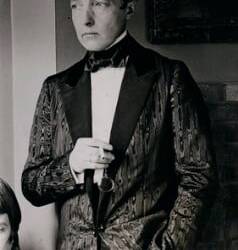
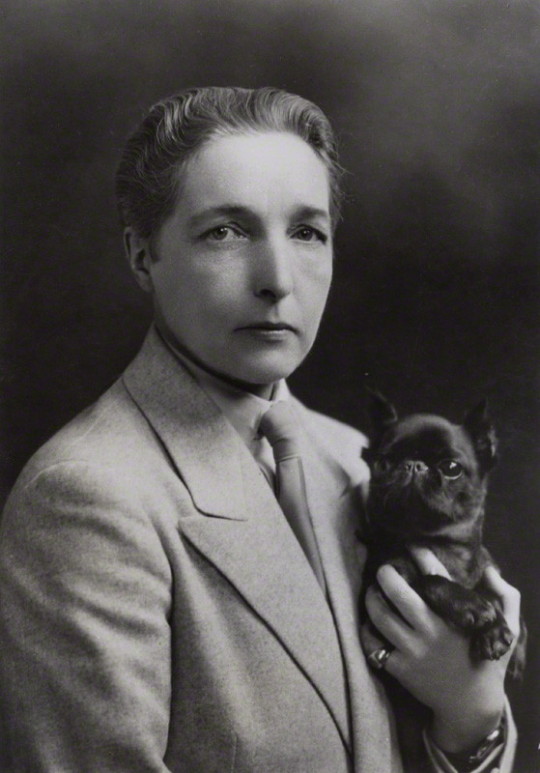
Neglected by her parents as a child, she studied at King's College London, then in Germany. She reached adulthood without a vocation, and spent a big part of her twenties in a series of relationships with women who later left her to marry.
In 1907, at the spa town of Bad Homburg in Germany, Marguerite met Mabel Batten, a lieder singer nicknamed Ladye, and the two fell in love. Batten was 51 at the time, with a husband, grown-up daughter and grandchildren. Hall was 27.
The two move in together when Mabel's husband dies. At the time, Marguerite was known for her "masculine" appearance and constant wearing of "masculine" clothes; Mabel Batten nicknamed her "John", a nickname she kept all her life.
In 1915, Radclyffe-Hall fell in love with Una Troubridge, a cousin of Mabel's whom she had known for 10 years. Battel died the following year, and in 1917, the two women moved in together. The two lived together until Hall's death, despite Hall's many affairs (that Troubridge painfully tolerated).
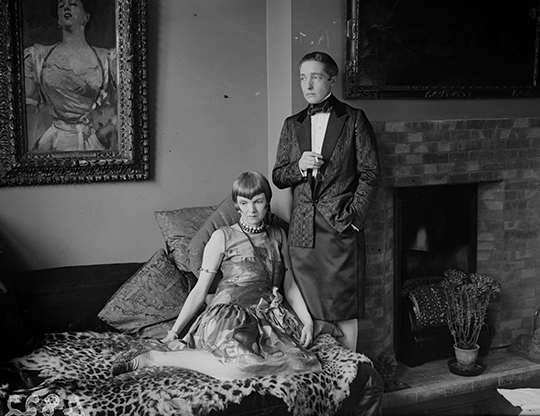
She has written eight novels and several poems.
Her first novel, "The Unit lamp", (1924) tells the story of a young girl who dreams of moving into a London apartment with her friend Elizabeth (a so-called "Boston marriage") and studying to become a doctor, but feels trapped by her emotionally-dependent, manipulative mother.
The novel's length and complexity made it difficult to sell, so Marguerite chose a lighter theme for her next novel, a social comedy : "The Forge". The book was quite successful this time.
Her next two novels were a great success, especially "Adam's Breed" (1926), which won the Prix Femina and the James Tait Black Award, something that had only been achieved once before.
But her best-known novel is "The Well of Loneliness". Published in 1928, it tells the story of a butch lesbian, from her childhood in England to her stay in Paris, where she becomes a famous writer. The novel was the subject of an obscenity trial in the UK (despite not being sexually explicit), resulting in the destruction of all copies. The USA authorized its publication after a long, long legal battle. Considered a classic, an extremely important work of lesbian literature, "The Well of Loneliness" was 7th on Publishing Triangle's 1999 list of the best gay novels.
In 1930, Hall won the gold medal of the Eichelbergher Humane Award. She was a member of the PEN club, the Council of the Society for Psychical and a member of the Zoological Society of London.
She died of colon cancer in 1943, aged 63. Her impact on literature, and lesbian literature in particular, remains significant to this day.
You can find the list of her novels (and more details about her life) here !
And some of her poems here :
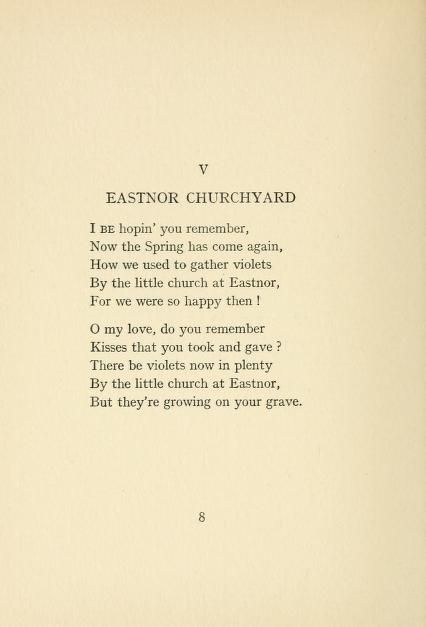
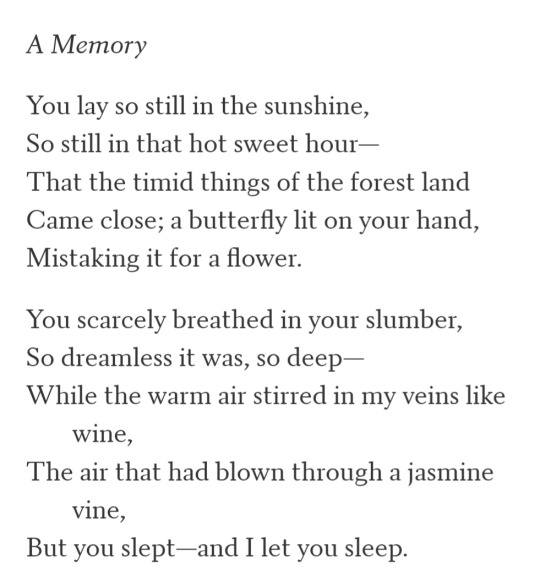
Hope you enjoyed, and see you tomorrow for the 5th post!
#lesbian#pride#pride month#lesbian pride#lesbian history#lesbian writer#lesbian poet#radclyffe hall#marguerite radclyffe-hall#butch lesbian#lgb history#female homosexuality#female homosexual#women's history#herstory
188 notes
·
View notes
Text
Guda: a medieval self-portrait

Self-portrait of Guda, homilary, Frankfurt, second half of 12th century.
"The first category of figures we have considered shows the artist present in the work or in the process of creating it. To that category, we add a second type of portrait or self-portrait, in which the artist beseeches a favorable judgment for him-/herself after the work is completed.
Such is the case with the famous signed self-portrait of Guda, who represents herself within a collection of homilies in an initial D[ominus] for the octave of the Pentecost. The inscription reads: “guda peccatrix mulier scripsit q[ue] pinxit h[un]c librum (Guda, a sinful woman, wrote and painted this book).” Of the seven initials in the manuscript, this D is one of only two that contain figures. The other historiated initial comes at folio 196, the opening of the Assumptio Mariae, and contains a portrait of the virgin identified as Maria Virgo. The other five initials display dragons, interlaces, ribbons, or spirals.
Guda represented herself firmly grasping the initial with her left hand and raising her right in a gesture of salutation and expectation. I would argue that Guda carefully and consciously chose to be here. The initial opens the ninth homily of St. John chrysostom, the Sermo beati iohannes episcopi de david ubi goliad immanem hostem devicit (Sermon of the blessed Bishop John, on when David overcame the monstrous enemy Goliath), which explains the election of David. The homily also offers an occasion to meditate on the gifts of the Holy Spirit and its role in comforting the soul. In short, Guda has chosen the perfect spot in which to await the Second Coming of Christ, and this is why she represents herself as a sinner, whose activity as an artist should count in her favor at the end of time.
Guda’s self-representation in this way is analogous to the scene the scribe Swicher has staged (for the reader?) in the frontispiece of his copy of isidore of Seville’s Etymologies. Swicher’s author portrait is most original. In the upper register, Isidore of Seville is depicted in conversation with Bishop Braulio of Zaragoza, the patron of the Etymologies. In the lower register, Christ in propria persona presides at the scribe’s last judgment. Two angels busy themselves at a balance in which is weighed the very manuscript Swicher copied. The work of the scribe counts as a work of virtue: a third angel takes Swicher’s soul away through a thick cloud, whereas the devil turns around empty-handed. The Titulus attests to this: "O god, deign to have mercy on this wretched scribe. Do not consider the weight of my faults. Small though the good things may be, let them be exalted over the bad. Let night give way to light; let death itself give ground to life.”
Guda and Swicher make use of the same patterns of visibility and those patterns are not gender-specific. In both cases, the artists stage their humility and represent their belief that they might reach the heavenly kingdom through the artistic work they have done."
Mariaux Pierre Alain, "Women in the making: early medieval Signatures and artists’ portraits (9th–12th c.)", in: Reassessing the Roles of Women as 'makers' of Medieval Art and Architecture
#history#women in history#women's history#12th century#germany#german history#middle ages#medieval history#medieval women#women's history month#women painters#female artists#educational#herstory#illuminations#marginalias#manuscripts#medievalism#guda
220 notes
·
View notes
Text
Sally Kristen Ride (May 26, 1951 – July 23, 2012) was an American astronaut and physicist. She pioneered the way for American women in space and still does today, twenty-two years after she passed.

Born in Los Angeles, she joined NASA in 1978, and in 1983 became the first American woman and the third woman to fly in space, after cosmonauts Valentina Tereshkova in 1963 and Svetlana Savitskaya in 1982.

NASA was still adjusting to female astronauts, and engineers had asked Ride to assist them in developing a "space makeup kit", assuming it would be something a woman would want on board.
They also infamously suggested providing Ride with a supply of 100 tampons for the six-day mission

"Everywhere I go I meet girls and boys who want to be astronauts and explore space, or they love the ocean and want to be oceanographers, or they love animals and want to be zoologists, or they love designing things and want to be engineers. I want to see those same stars in their eyes in 10 years and know they are on their way." -Sally Ride

On July 1, 1989, Ride became a professor of physics at the University of California, San Diego (UCSD), and director of the California Space Institute (Cal Space), part of the university's Scripps Institution of OceanographyRide and O'Shaughnessy, along with three colleagues, founded Sally Ride Science in 2001 as a science education company. When Ride died after a 17-month battle with pancreatic cancer, O’Shaughnessy wrote Ride’s obituary for the company’s website.

The obituary said Ride was survived by “Tam O’Shaughnessy, her partner of 27 years,” revealing their relationship to the public for the first time. Ride had ensured that O'Shaughnessy would inherit her estate when she drew up her will in 1992. They registered their domestic partnership on August 15, 2011.
Ride and O'Shaughnessy, along with three colleagues, founded Sally Ride Science in 2001 as a science education company. When Ride died after a 17-month battle with pancreatic cancer, O’Shaughnessy wrote Ride’s obituary for the company’s website.

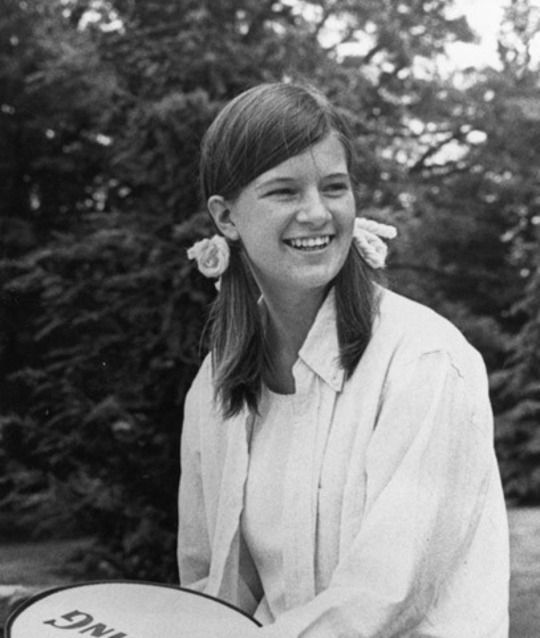
#sally ride#women in space#lesbian women#lgbt#lgbtq#womens rights#womens history#herstory#womens history month#whm 2024#herstory 2024#lesbian history#lgbt history#gay women#lgbtqiapd#space#nasa#nasa photos#outer space#women in stem#women in history#love#love is love#gay rights#astronaut#Astronomy
33 notes
·
View notes
Text

March For Women [Project 31] - Littlebydigital

A look back at a long-term research project I started over a year ago [herstory illustrated]

This project was initially titled March for Women since it began as an illustration project to honor women's history.
The illustration of the red stockings marching forward. A symbolism of inclusivity and diversity. The color red specifically chosen to honor the Redstockings 1969*

Okay ladies let's get information.
This illustration is a play on Queen Bey's famous lyrics.
Stay tuned for more.
#digital magazine#feminist magazine#illustration#womens history month#womens liberation#redstockings 1969#feminist art#beyonce nation#i love puns#equal rights#herstory#women in history#work in progress#personal project
4 notes
·
View notes
Text
Georgette Seabrooke
Georgette Seabrooke (1916– 2011), was an American muralist, artist, illustrator, art therapist, non-profit chief executive and educator. via Wikipedia #PalianSHOW
Georgette Seabrooke at work on her mural entitled “Recreation in Harlem” for the nurses recreation room at Harlem Hospital Georgette Seabrooke aka Georgette Seabrooke Powell; Aug 2, 1916 – Dec 27, 2011, was an American muralist, artist, illustrator, art therapist, non-profit chief executive and educator. Harlem Art Workshop, African American, Georgette Seabrooke (Powell) x She is best known…
#american muralist#art#art by women#Art HERstory#artbywomen#black history month#Georgette Seabrooke#Georgette Seabrooke Powell;#harlem#Harlem Renaissance#PalianSHOW#poetry#Women&039;s Art#womensart
2 notes
·
View notes
Text
The Unofficial Black History Book
Mary Beatrice Davidson Kenner (1912-2006)
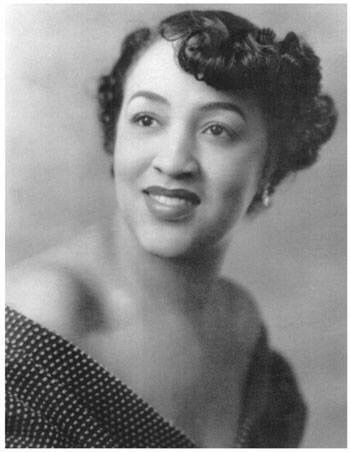



Mary Beatrice Davidson Kenner is a forgotten black inventor who changed the way menstrual pads operated, but her idea was turned down because of the color of her skin, and she was later not given credit for her invention.
This is her story.
Mary Beatrice Davidson Kenner was born on May 17th, 1912, in Monroe, North Carolina. She came from a family of inventors. Her father, Sidney Nathaniel Davidson (1890–1958), patented a clothing press that would fit into suitcases but never made money off of the invention, which failed. Her grandfather invented a light signal for trains, and her sister, Mildred Davidson Austin Smith (1916–1993), invented and commercially sold board games.
As a child, Kenner was interested in creating tools to make everyday life more convenient. She had her first idea when she was six years old—a self-oiling door hinge—but the idea never came to fruition. She would draw her ideas throughout her childhood. One of her ideas was a portable ashtray that would attach to the cigarette carton and a sponge tip that would soak the rainwater off an umbrella.
When Mary turned 12, her family moved to Washington, D.C., and she would often visit the United States Patent and Trademark Office to see if anyone had beaten her to patent any of her ideas.
Side Note: The Patent System - that started in 1787, was not open to African Americans who were born into slavery, even if freed, as it did not consider them citizens.
After graduating high school, Mary enrolled at Howard University but later dropped out when she couldn't afford tuition. She took on odd jobs and became a federal employee during WWII. She worked for the Census Bureau and later for the General Accounting Office. Mary also chaperoned younger women who attended dances at military bases in the Washington, D.C., area.
She met soldier and renowned boxer James "Jabbo" Kenner and married him in 1951. They adopted five boys but had no kids of their own. She retired from government work and opened a flower shop while continuing to work on her inventions.
By 1957, Kenner had saved enough money to file her first patent for an elastic belt that held sanitary napkins in place. Adhesive Maxi Pads didn't exist at the time.
How the invention worked was that a moisture-proof napkin pocket was built into the belt, which prevented more leaks than the cloth pads and rags women were using at the time.
One company. 'The Sonn-Nap-Pack' was interested in her invention and offered to market it. But when they discovered she was a black woman, they turned her down instantly.
"One day, I was contacted by a company that expressed an interest in my marketing idea. I was so jubilant...I saw houses, cars, and everything else about to come my way. Sorry to say, when they found out I was black, their interest dropped." She said in Laura F. Jeffery's Book, 'Amazing American Inventors of the 20th Century'
Because of racism, they did not patent the sanitary belt until 30 years after Kenner introduced it. But her invention was a crucial step for women's comfort and revolutionized menstrual hygiene during a time when women had limited options.
Between 1956 and 1987, Kenner received five total patents for her household and personal inventions. A backwasher that one could mount on the shower or bathtub wall was among Kenner's inventions for which she received a patent. When her sister was confined to a bed due to multiple sclerosis in 1976, it inspired her to file her third patent.
A special attachment for a walker or wheelchair that included a hard-surfaced tray and a soft pocket for carrying items. Also, a toilet paper holder that made sure the loose end of the roll was always reachable.
Kenner never became rich from her inventions, but her ideas centered on accessibility and ease and paved the way for more inventions in the future.
Mary Beatrice Davidson Kenner died at the age of 93 on January 13th, 2006.
__
Previous
Juneteenth
Next
The Tulsa Race Massacre
__
My Resources
https://www.diversityinc.com/womens-history-month-profiles-mary-beatrice-davidson-kenner-inventor/
#the unofficial black history book#mary beatrice davidson kenner#black history matters#black history 365#black stories#herstory#blackblr#little known black history#forgotten black figures#black figures#for the culture#black activism#black women#black inventors#black female writers#black tumblr writers#writing community#know your history#learn your roots#african american inventors#african american history#writers on tumblr#women of black history#women in history#black history month
10 notes
·
View notes
Photo


Women's rights are human rights ♀️💪✊💜💜!
I find it important to also note that It's not 'happy international women's day' because it is *not* a day for celebration, at least not the way corporations (and flower-gifting men that don't deconstruct where the problem is 🙃) go about it: Yes, Women’s History Month is meant to keep visibilizing women in Herstory and women today (but also all year round!). But the reason why 8M still needs to exist is to remind everyone that women's rights are human rights, that we still live in patriarchal societies, that sexism and misogyny are still a thing in many ways and many places, that we haven't reached gender equality by a long shot, and that ALL women from ALL intersections of race and ethnicity, gender identity and sexuality, class, ability, body type, etc etc need to be visibilized and seen as equal human beings every single day of the year. It's not a birthday or anniversary or anything that merits flowers and felicitations, it's a day to remind everyone that there is a fight, and it is ongoing. . "Look, I did a wee bit of reading, and it turns out that for the most of the history of this planet men have treated women a teensy bit badly. As a woman, I object to that, so I decided to help" And regarding the exclusionary 'feminist' faction that has wrongly appropriated suffrage imagery for their own twisted discourse lately 😣, a reminder that when cosplaying Suffragette!Missy, it's a statement that here's a canonically genderfluid and queer character with a penchant for Edwardian nanny and Suffragette aesthetics who says intersectional feminism and women's rights for all women better than any in that group - and it's *Missy* 😅! 💜💚🌈💪✊♀
#8m#women's history month#international women's day#international women's day 2023#herstory#feminism#intersectional feminism#doctor who cosplay#missy cosplay#river song cosplay#13th doctor cosplay#the future is female#good omens cosplay#crowley cosplay#merida cosplay#star trek cosplay#historical reenactment#women's suffrage#suffragette#votes for women#deeds not words#My cosplays#My historical reenactment#rose tyler cosplay#elven cosplay#luthien cosplay#silmarillion cosplay#lotr cosplay#tolkien cosplay#arwen cosplay
15 notes
·
View notes
Text
13 notes
·
View notes
Text
"It's a tradition with us, mister!" - Volunteer for the #RevWarVets mission today.

Under the alias Robert Shurtliff, Deborah Gannett served valiantly for over two years. She braved the battlefield at Tarrytown, was wounded, and stood witness to Cornwallis’s surrender. Remarkably, she is believed to be the only woman to receive a pension for her own service in the Revolution.
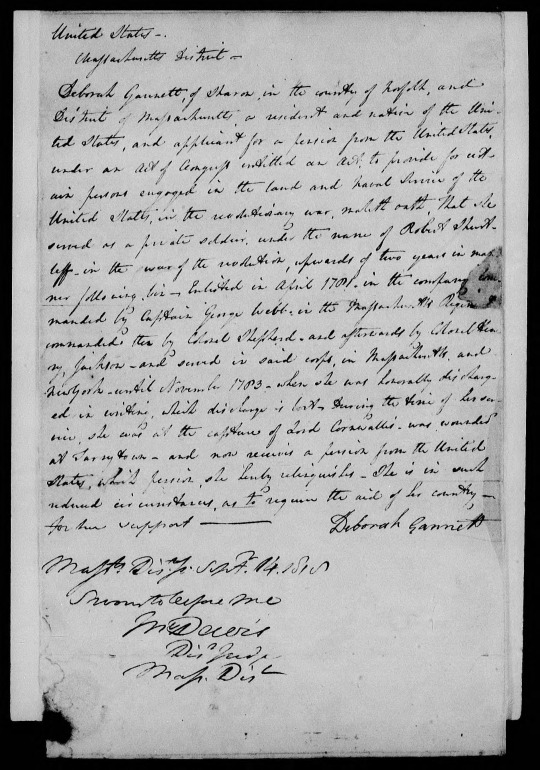
This story is just one of many waiting to be discovered and shared through the #RevWarVets Transcription Project in partnership with the National Park Service.

Your participation can make a huge difference. By joining our transcription project, you help bring these vital stories of our first veterans to light, ensuring they are remembered and honored.
Get started today!
Project Page: https://www.archives.gov/citizen-archivist/missions/revolutionary-war-pension-files
Deborah’s Catalog entry:
#RevWarVets#Revolutionary War#National Archives#Transcription#HERstory#History#Veterans#Citizen Archivist#Research#Women's History Month
126 notes
·
View notes
Text
For this 2nd day of Pride Month I decided to talk about a woman I mentionned yesterday in the post about Renée Vivien (that you should absolutely read by the way, Renée Vivien is amazing) :
Natalie Clifford Barney !
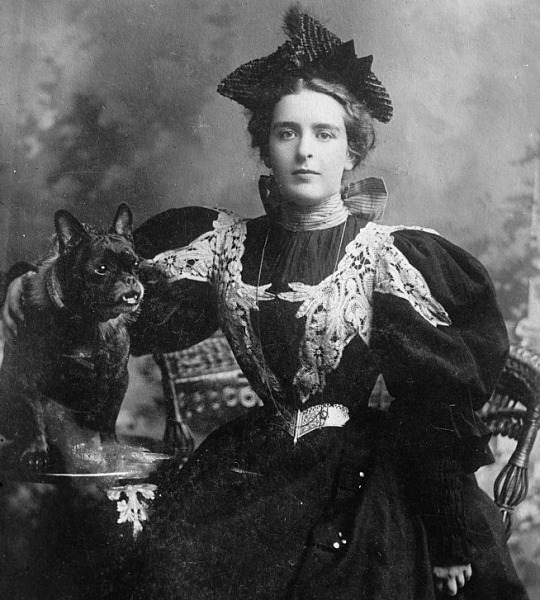
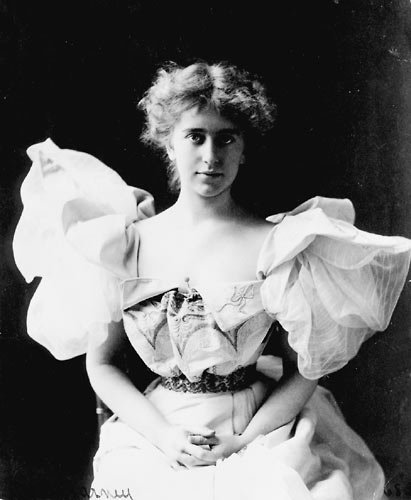
I talked about her to say that she's had a love story with Renée Vivien, but that's not the only thing she's done.
Natalie was born in 1876 in the United States and died in 1972 in Paris, at the age of 95. Writer and poet, she was the first woman to use the word "lesbian" in her writings (in this case a collection of poems, published in 1899), instead of the word "tribade" (it's another word for lesbian in french) or simply "homosexual". The word lesbian back then was even more taboo than it is today, so you can imagine how important this fact was (and still is).
She was also famous for the parties she organised: she held a literary salon which she wanted to turn into the "new Mytilene". She invited the female artists, writers and intellectuals of her time, in response to the all-male Académie Française, and they all spent whole afternoons and evenings in the flat of the wealthy American.
Natalie never tried to hide her homosexuality. As she said in a sentence that quickly became her most famous one,
"Why would anyone blame me for being a lesbian ?"
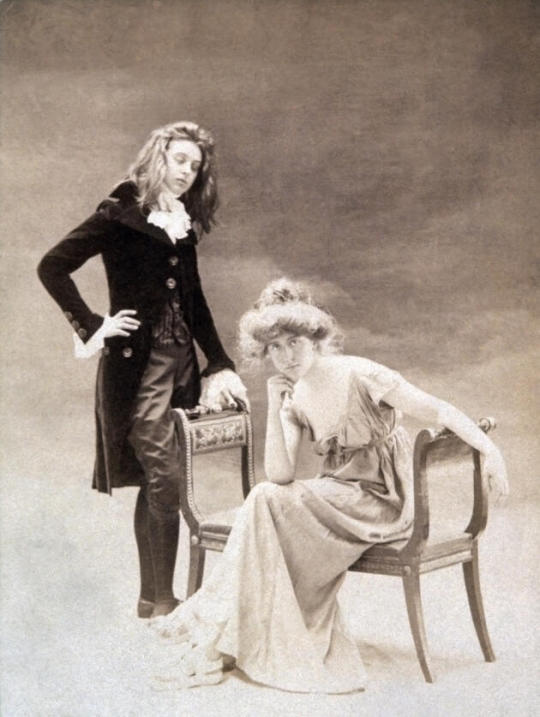
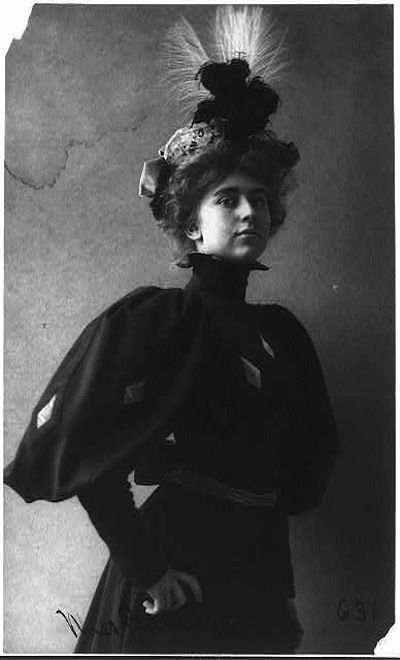
(Yes, that's her with Renée Vivien)
Natalie's mother (a renowned artist) and her tutor awakened her interest in the French language at an early age, and when she was a little older, she was sent to a school in France; thanks to this, she spoke French fluently and without an accent, and developed a soft spot for this country.
Natalie was 12 when she realized she was a lesbian, and decided right away to "live in the open, without hiding from anyone".
Hee first known relationship was with Liane de Pougy, a famous dancer of the time (whom she cheated on with many women). Natalie wrote about this love story in her collection Quelques portraits, sonnets de femmes. ("Some portraits, sonnets of women"). Liane wrote about it in her novel "Idylle sapphique", which so fascinated the French public that it had to be reprinted sixty times in the same year, with people torn between admiration and scandal. The two women eventually parted ways, however, due to Natalie's infidelities and Liane's "debauched lifestyle" (in Natalie's words).
As I said, this book caused a huge scandal. Natalie was forced to return to the United States, where her father burned all her writings he could find, and tried to marry her off. However, she categorically refused to obey him, and faced with her stubbornness, her father gave up, and Natalie returned to Paris, where she had a lot of lovers. Among these lovers, there's Renée Vivien (probably the most important, since Natalie never accepted their breakup and tried to get Renée back until Renée died at 32) Lucie Delarue-Mardrus, Colette, Emma Calvé, Olive Custance, Henriette Roggers and many others.
In 1902, on the death of her father, Natalie Clifford Barney inherited a large fortune and was able to rent a house in Neuilly-sur-Seine, where she gave parties that became the talk of the town.
In 1910, she moved into a house at 20 rue Jacob ; for nearly sixty years, this house was the setting for her famous "Fridays", one of the last influential literary salons. A LOT of famous people went there. Like really. The complete list is on Wikipedia if you're curious, and here's a screenshot with some examples :

Marie Skłodowska-Curie went there. Albert Einstein went there. Apollinaire and Proust went there. Oscar Wilde went there. That's cazy to me!
She's had other lovers, like Elisabeth de Clermont-Tonnerre, but her greatest love story was with the painter Romaine Brooks, with whom she had a relationship similar to that of a married couple from 1914 to the end of her life. Of course, this didn't stop her from cheating on Romaine with other women: Natalie was known for her infidelities, believing that polygamy was necessary for a couple's survival, although she claimed that this didn't stop her from being deeply in love with Romaine. She cheated on her for example with Oscar Wilde's niece Dolly, and Nadine Huong, whose story I'll tell one day because it's so interesting!
She spent the years of the Second World War in Italy, and later returned to France to find her second home, which she shared with Romaine Brooks, destroyed. In 1949, she reopened her salon (which started to welcome more and more famous actors and actresses on top on everyone else).
Nothing much happened for the rest of his life. She never left Romaine Brooks (despite continuing to have affairs with a host of other women) and died in Paris in 1972, aged 95.
Natalie Clifford Barney's work and life were very important not only for culture itself, but also for the lesbian community. She made a major contribution to lesbian visibility, opened many minds, helped normalize (even if we still have a long way to go) homosexuality and, above all, helped many lesbian women accept themselves, understand that they were not alone and live the life they deserved.
The influence of her works and her salon on culture, literature, cinema, theater and even science is immense and deserves to be recognized. We should be talking about her much more than we are!
Here's some of her poems with an english translation :
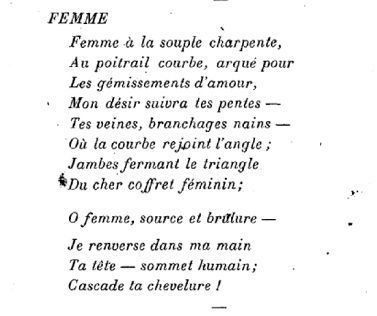
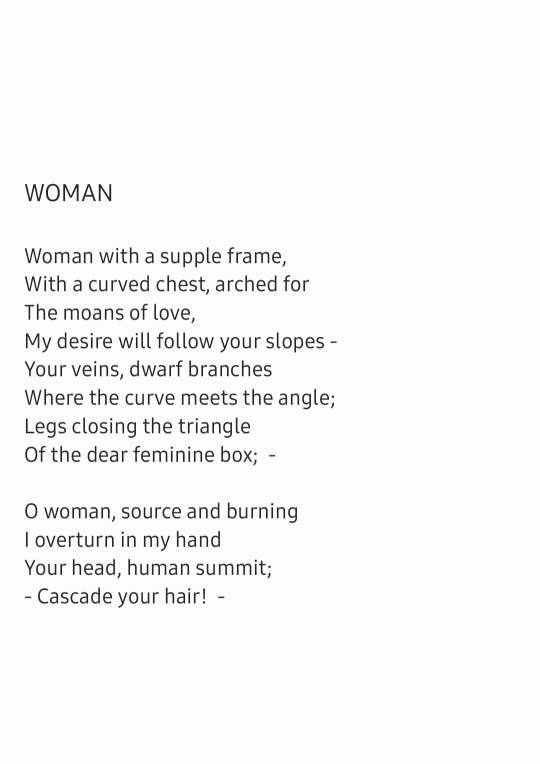

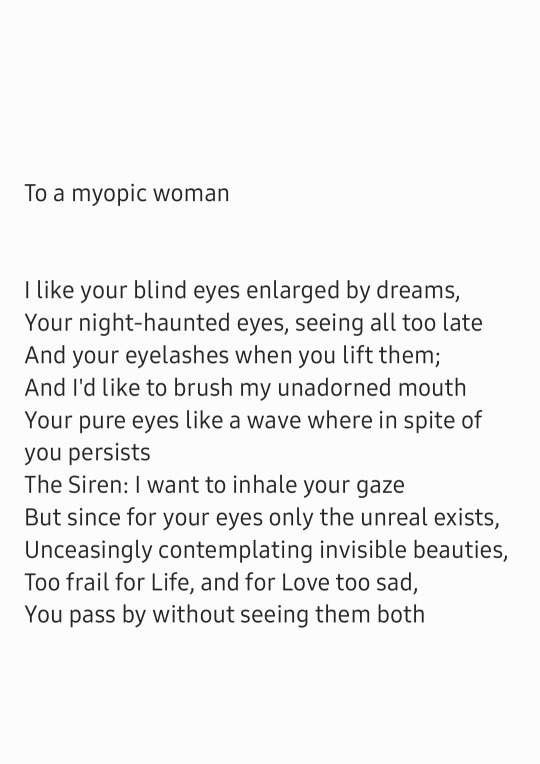
And she's written loads of other stuff that I really recommend you read! She was an interesting woman who wrote interesting things. Look her up on Google and read her writings and her life!
Anyway, that's it! Sorry for posting so late, and see you tomorrow for the 3rd lesbian pride post 🏳️🌈
#lesbian#lesbian pride#pride#pride month#lgb#lgbt history#lgbt#female homosexual#female homosexuality#female history#women's history#herstory#lesbian history#poetry#french poetry#poésie française#poésie#american writer#natalie clifford barney
140 notes
·
View notes
Text
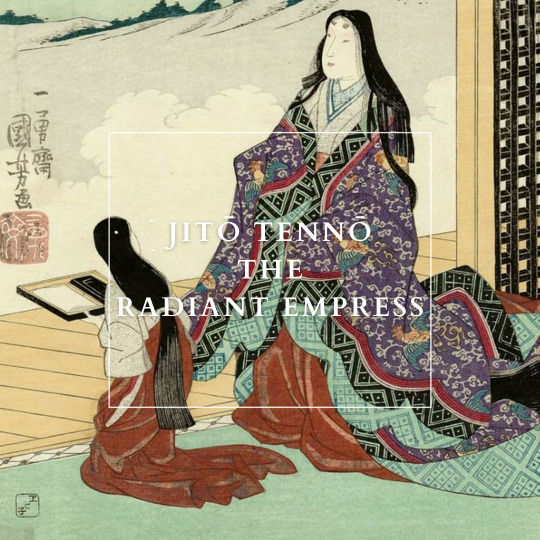
Japan's third empress regnant, Empress Jitō (645-703) was a powerful and effective ruler. Shrewd, bold and clever, she walked in the footsteps of empresses Suiko and Saimei and prevailed against all odds.
A troubled youth
Jitō was the daughter of Prince Naka no Ōe, the son of empress regnant Saimei. The year she was born, her father killed a minister in front of his mother, leading to her abdication.
Jitō’s maternal grandfather committed suicide three years later, having been wrongly accused of plotting against Prince Naka no Ōe. Jitō’s mother, Ochi, died of grief. Jitō was thus placed in her grandmother's care and raised by the former empress.
At age 12, she was married to her paternal uncle, Prince Ōama, who was 27. Jitō was a reserved person with a brilliant intelligence and much liked by the court. She was curious, open-minded and studied Chinese literature. The death of her grandmother in 661 pained her greatly. In 662, Jitō gave birth to her only child: prince Kusakabe. Her father then ascended took the throne as Emperor Tenji in 667.
Succession struggle
The question of Emperor Tenji’s succession soon arose. The sovereign favored Jitō’s half-brother, Prince Ōtomo, but Prince Ōama had his own ambitions. He and Jitō left the court, waiting for an opportunity to strike.
Ōtomo indeed succeeded Tenji, but Ōama revolted against him soon after with Jitō's support. When they arrived at Ise province, she dressed in male clothes and personally addressed the troops. She also worked on tactical plans. As Ōama left to leave an offensive in Ōmi province, Jitō took command of the troops stationed at Ise. She had indeed volunteered to defend the shrine dedicated to the sun Goddess, Amaterasu.
Their joint efforts led to their success. Ōama ascended the throne in 673 as emperor Tenmu, with Jitō becoming his co-ruler.
The radiant empress
Jitō was very influential in court matters. This was reflected in the choice of Tenmu's heir. He could have chosen his son by another woman, Prince Ōtsu, as his heir, but chose Jitō’s son, Prince Kusakabe, instead.
As Tenmu died in 686, Jitō took the matter in hand. She declared Ōtsu guilty of treason and forced him to commit suicide. She then organized grandiose funerals for her husband and wrote poems expressing her grief.
Oh, the autumn foliage
Of the hill of Kamioka!
My good Lord and Sovereign
Would see it in the evening
And ask of it in the morning.
On that very hill from afar
I gaze, wondering
If he sees it to-day,
Or asks of it to-morrow.
Sadness I feel at eve,
And heart-rending grief at morn—
The sleeves of my coarse-cloth robe
Are never for a moment dry.
Her son died in 689. Since her grandson was too young to rule, Jitō became empress regnant.
She reformed the country, establishing a strong central power and surrounded herself with capable ministers. In 689, she enacted a mandatory code for all local governors. In 690, she launched a population census.
She reformed the army, improving the recruitment conditions and the troops' training. A protector of the arts, she also actively participated in the propagation of Buddhism. Poetry became more refined during her reign. One of her poems was later included in the popular Hyakunin Isshu anthology:
The spring has passed
And the summer come again
For the silk-white robes
So they say, are spread to dry
On Mount Kaguyama
Jitō made her predecessors' objective of replacing the tribal system with a strong central power a reality. Her rule was synonymous with a degree of stability that neither her father nor husband were able to reach. She can be regarded as one of the true founders of Japan’s imperial monarchy. The empress was also fond of travels. In 692, she undertook a trip symbolic trip to Ise province, strengthening her authority and gaining the support of the local people.
The empress indeed took advantage of the Shinto rituals and the image of the sun Goddess to reinforce her legitimacy and used the links between the deity and the imperial family. Such was her prestige that Kakinomoto no Hitomaro, one of the greatest poets of his time, compared her to a goddess.
The retired empress
Jitō’s grandson, Monmu (r. 697-707) was ready to take the throne. She stepped back as Dajō Tennō (or “retired emperor”), becoming the first sovereign in Japanese history to assume this title. The power was in reality still in her hands. The Taihō Code was promulgated in 701, reforming governmental administration as well as administrative and penal law. This was only made possible by the reforms enacted during her reign.
In 702, she went through another tour of inspection of the eastern provinces and bestowed gifts and court ranks on the local officials and leading farmers. Jitō died in the first month 703 and her ashes were interred in her husband's tomb.
Here's is the link to my Ko-Fi if you like what I do! Your support would be greatly appreciated.
Further reading:
Aoki Michiko Y., "Jitō Tennō, the female sovereign",in: Mulhern Chieko Irie (ed.), Heroic with grace legendary women of Japan
Souyri Pierre-François, Nouvelle histoire du japon
#history#women in history#women's history#women's history month#japan#japanese history#powerful women#herstory#historyedit#7th century#queens#historyblr#historical figures#japanese prints#japanese art
128 notes
·
View notes
Text

Contralto singer Carol Brice was born in Sedalia, North Carolina on April 16, 1918 into a musical family. Eventually she became one of the first African American classical singers with an extensive recording repertoire. Brice trained at Palmer Memorial Institute in Sedalia and then enrolled in Talladega College in Alabama, where she received her Bachelor of Music degree in 1939. She later attended Juilliard School of Music between 1939 and 1943 where she trained with Francis Rogers. In 1943 Brice became the first African American musician to win the prestigious Walter W. Naumburg Foundation Award.
Carol Brice first attracted public acclaim at the New York World’s Fair in 1939 when she performed in the opera, “The Hot Mikado.” Her next major public performance came in 1941, when she sang at a Washington concert honoring the third inauguration of President Franklin Delano Roosevelt. Her brother, the pianist Jonathan Brice, was frequently her accompanist at concerts and competitions.
Ms. Brice’s Broadway career accelerated after World War II when her talent for both opera and musical theatre became apparent. In 1946 she received her first recording contract from Columbia Records for Manuel de Falla’s El Amor Brujo, which was performed with the Pittsburgh Symphony Orchestra conducted by Fritz Reiner. She sang with the Pittsburgh Symphony for all of 1946 and later performed as Addie in the New York City Opera’s 1958 production of Marc Blitzstein’s Regina. Brice remained with the New York City Opera until 1963. She performed with Volksoper in Vienna, Austria from 1967 to 1971 and the Houston Grand Opera from 1976 to 1977. She played Maria in the Houston Grand Opera production of Porgy and Bess. The recording of that performance won a Grammy and the entire show moved to Broadway where it won a 1977 Tony Award for Most Innovative Production of a Musical Revival.
Brice also had a successful career on Broadway. She played Kakou in the original Broadway cast of Harold Arlen’s Saratoga (1958) and Maude in the 1960 revival of Finian’s Rainbow. During the 1960s her numerous roles included Catherine Creek in The Grass Harp, Harriett Tubman in Gentlemen, Be Seated, and Queenie in Showboat.
While performing in Vienna in 1968, she met her husband, the baritone Thomas Carey. The couple had two children. Mr. Carey returned to the U.S. in 1969 to teach at the University of Oklahoma in Norman, and Carol Brice joined him there after another stint on Broadway. Ms. Brice officially joined the University of Oklahoma faculty in 1974. One year later she and her husband founded the Church Circuit Opera Company in Norman, Oklahoma. The company was renamed the Cimarron Circuit Opera in 1981 and continued until Thomas Carey’s death in 2002.
Carol Brice died on February 14, 1985 in Norman, Oklahoma. She was 66.
Source: Black Wall Street, Facebook
#Carol Brice#contralto singer#very talented#black history#women's history month#HERstory#knowledge is power
8 notes
·
View notes
Text
Rebecca Lee Crumpler was also one of the first female physician authors in the nineteenth century.

In 1883, she published A Book of Medical Discourses. The book has two parts that cover the prevention and cure of infantile bowel complaints, and the life and growth of human beings. Dedicated to nurses and mothers, it focuses on maternal and pediatric medical care and was among the first publications written by an African American on the subject of medicine.

She made a number of contributions these societies, and the Massachusetts Medical Society. She was the first woman and/or person of color elected President of the Society of Academic Anesthesiology Chairs. Her legacy includes training over 100 anesthesiologists.
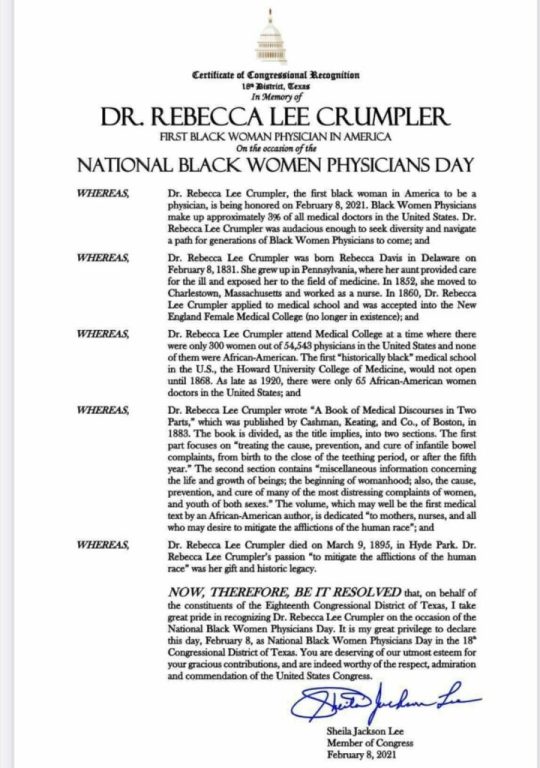
Crumpler was subject to "intense racism" and sexism while practicing medicine. During this time, many men believed that a nearly immutable difference in average brain size between men and women explained the difference in social, political, and intellectual attainment.Because of this, many male physicians did not respect Rebecca Lee Crumpler, and would not approve her prescriptions for patients or listen to her medical opinions.
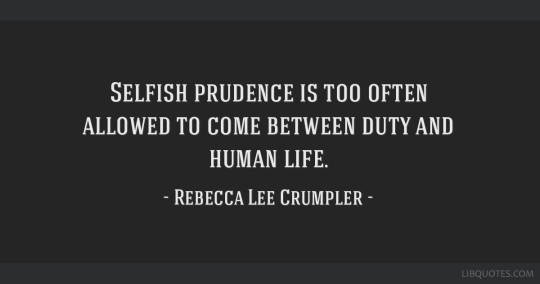
Read more about her here!
V
V
V
#lgbt#human rights#humanity#leftist#lgbtq#history#love#black herstory#black woman#black history#blacklivesmatter#black women#black history month#black doctors#first black woman to become a doctor#doctor#medicine#african american history#heritage#autism#socialism#leftism#social justice
7 notes
·
View notes